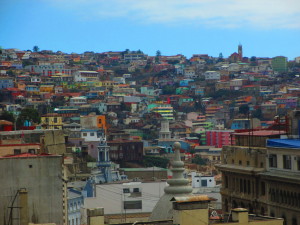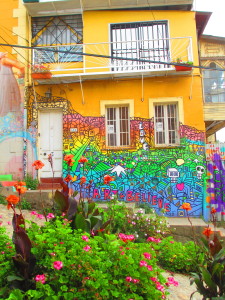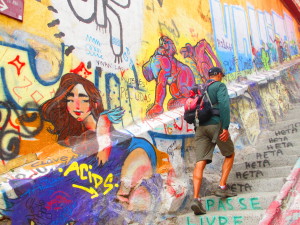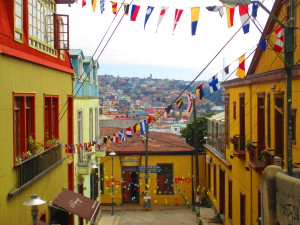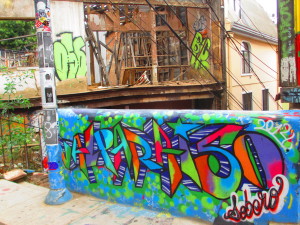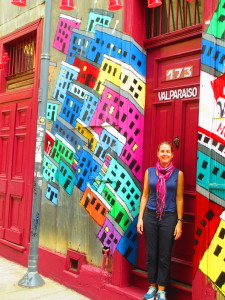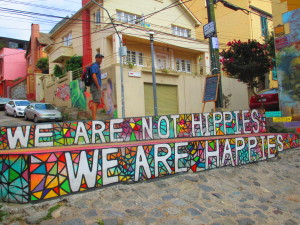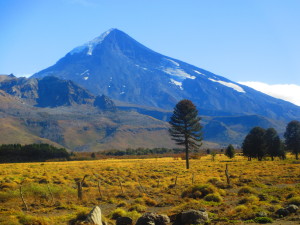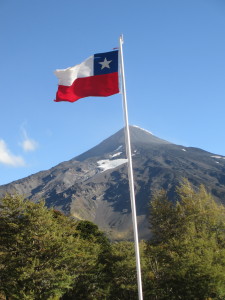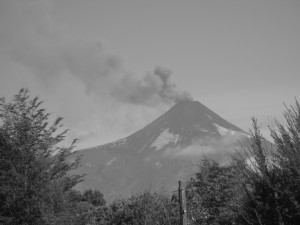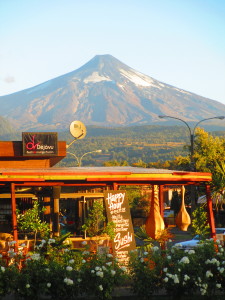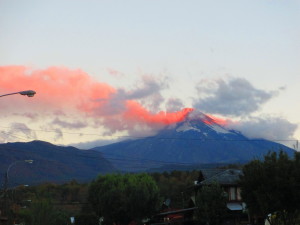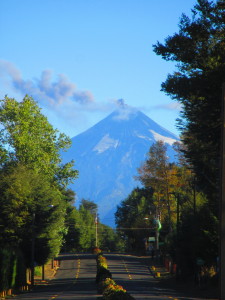The bus ride from Pucon to Santiago was 11 hours north. We opted to make the trip during the day instead of overnight and I’m pleased to say that we survived without any drama. We’ve actually become rather efficient bus travelers at this point. The most noteworthy thing that happened was that I stayed awake about half the time, crazy I know. Harry actually had someone to talk to!
Santiago, the Capitol of Chile
Santiago is a huge metropolitan region surrounded by the Andes. Our taxi driver said that the Andes are actually IN the city, and after spending 12 days here we know what he meant. There are several large hills in the city that offer fantastic views that were much appreciated after the effort it took to walk to the top. However, Santiago, which is essentially in a bowl surrounded by the mountains, has a serious issue with smog. Every day we remarked how amazing the views would be without as much pollution.

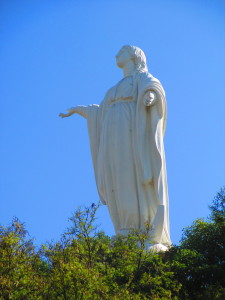
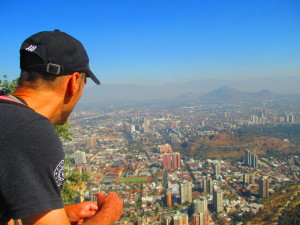
Rested, Relaxed + Recharged
We stayed in a great little airbnb apartment while we were here. It was so nice to unpack and settle in. Going grocery shopping and cooking meals was a luxury we haven’t had since Buenos Aires. Spending so much time here allowed us to explore different parts of the city at a slower pace. We were also able to do lots of research and planning.
City Life
We became quite adept at using the Metro and zipped around to all corners of the city in addition to exploring by foot. With seven million people living here, Santiago is crowded, loud and full of energy. We visited museums, walked through parks and explored different neighborhoods. We were lucky to experience the impressive “changing of the guard” ceremony at the presidential palace. We were blown away by the scale of the city’s cemetery, which sits on over 210 acres of land and is home to ornate mausoleums and statues. We also took a few day trips outside the city, including Pomaire, which is the Chile’s ceramic’s capital, and the port city of Valparaiso.
There were fruit stands all over the city and we quickly got into the habit of buying fruit cups and fresh juice. We loved the fact that Chileans put avocados on everything! We ate more than our fill of perfectly ripe, inexpensive avocados.
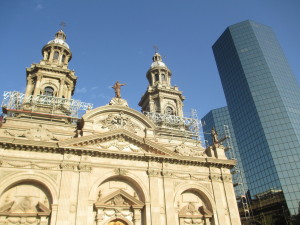

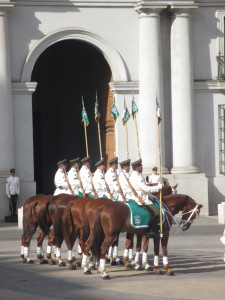


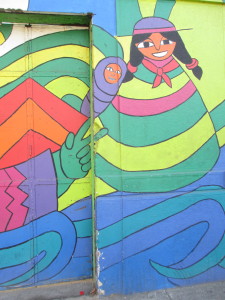
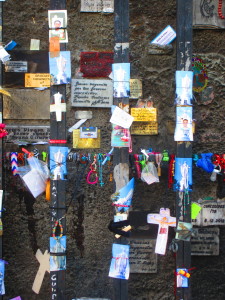
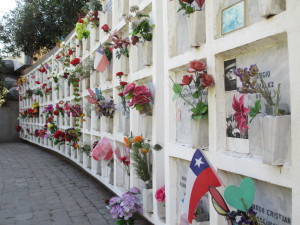
Market Madness
Santiago is known for its massive, bustling markets where you can buy anything from meat, fruit and vegetable to socks, batteries and nose hair trimmers. We went there on two different days because there was so much to take in. Streets and alleyways seemingly went on for miles. Vendors were selling wholesale to restaurants as well as retail to all walks of life. If the aisles weren’t packed enough with people crammed side-by-side, many folks were also pulling a wheeled-cart behind them to carry their goods. The stray dogs and little kids running underfoot just added to the frenzy of it all. As crazy as the scene felt to us the first day we were there, by our second visit we understood the energy a little bit more and could tap our feet to the rhythm of the jumbled market dance.
Have you ever wondered how a side of beef gets from the truck into the market stall? Well, now you know. I’m sure they don’t pay that guy nearly enough!
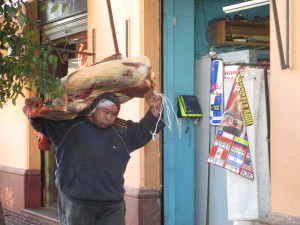


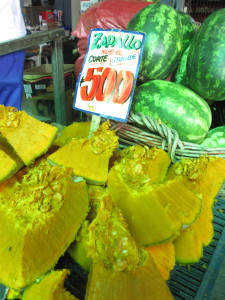
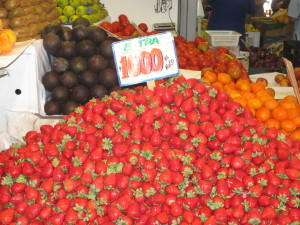
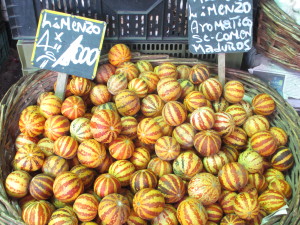

The Missing Chilean Flag
You might have noticed that in blogging about Argentina I included a lot of pictures of the Argentinean flag. I couldn’t help but notice that the Chilean flag is rarely seen around the city. We found out the reason is because during Pinochet’s dictatorship (1973-1990) so many protests included the flag that it became more a symbol of rebellion than of national pride. Therefore, Pinochet banned citizens from displaying the flag except on three holidays a year when it’s mandatory to display it. He also made it difficult to change laws, which is why this one is still in effect today.
Argentina
Speaking of Argentina, we’re crossing the Andes and heading back there tomorrow (April 13). First stop is Mendoza… we heard there might be some Malbec there. Adios, Chile!



